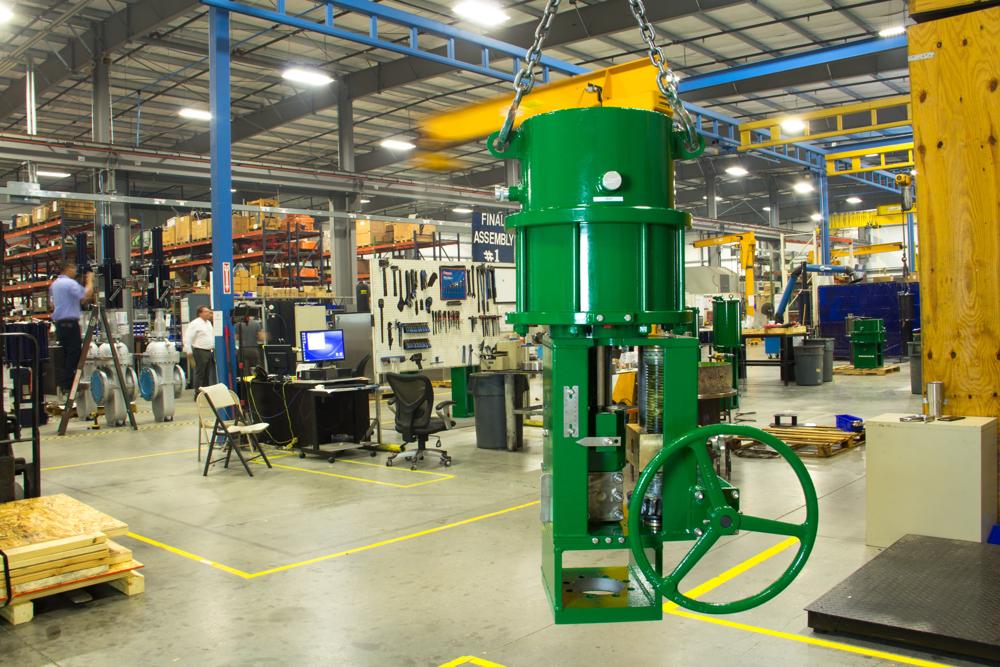M
Articles/News
Since our founding in 1995, we have specialized in flow control
and valve automation with an unwavering Vision.
Home |
How to Correctly Size Actuators
Correctly sizing actuators for valves is much more complicated than many people in our industry believe. Too often, people incorrectly assume that all you need to do to actuate a valve is to put the most cost-effective actuator on top of the valve.
Actually, you need to select the correct actuator for the application and specification of the valve. It’s important to have the actuator sized by a technically trained and knowledgeable individual that understands the functionality of both the actuator and valve. Otherwise, the results can be disastrous and/or expensive.
To size a manual valve correctly for automated service, you need the actuator to operate properly on demand. Particularly for Emergency Shutdown Valves (ESD). As the demand for increased industry safety continues to rise, more and more customers are asking for documentation on actuator sizing.
To be reliable an actuator must:
- be capable of operating at the minimum supply pressure available
- develop sufficient torque to overcome the valve torque throughout the complete stroke
- meet the service factor and safety factor established by the end-user or what is recommended by the valve manufacturer (whichever is higher).
An undersized actuator will be unable to operate the valve; but, on the other hand, an oversized actuator has the potential to damage the stem of the valve as well as being higher priced. To size an actuator correctly, we need to understand:
- Minimum and maximum supply pressure
- Actuator type
- Fail mode
- Valve torque
Let’s look at what is required concerning the minimum and maximum supply pressure. The normal pressure, which is often provided alongside the minimum and maximum, should never be used to size the actuator
Minimum supply pressure
The actuator has to be able to develop sufficient torque to operate the valve at the minimum supply pressure. This will ensure that the actuator will work even when the supply pressure is at its lowest.
An actuator can be sized for less than the minimum available supply pressure. This practice is usually done when actuators are oversized and the maximum torque of the actuator at the minimum supply pressure is exceeding the maximum allowable stem torque (MAST). For this specific situation, a regulator and a relief valve need to be added. The regulator will reduce the operating pressure even further, below the minimum supply pressure, ensuring that the actuator will not achieve a torque output that could damage the valve. The relief valve will ensure that in the event of a regulator failure, the output torque of the actuator at the minimum supply pressure will not damage the valve stem. It’s recommended to set the relief valve at 10% or 15% above the regulator setting.
Maximum supply pressure
The maximum supply pressure is important because the actuator has to be able to handle that pressure safely as well.
If it’s determined that the actuator cannot handle the maximum supply pressure, there is a way to adjust the package to perform safely. Installing a regulator and a relief valve is a relatively straightforward and cost-effective solution. The more pressure, the more torque the actuator has the potential to output. Therefore, a regulator and a relief valve will also reduce the probability of damaging the valve stem due to the excess actuator torque.
To get the most out of an actuator, it must be properly sized. ATI has the necessary technical experience to assist you with selecting and sizing the proper actuator for the application. We are able to engineer, design and manufacture to your precise specification for any quarter-turn or linear operation.
Get a same-day quote from an ATI specialist within 24 hours or less!
FAQs about Actuator Sizing:
What is Cv of a valve?
Cv denotes the flow coefficient of a control valve. It is essentially a numerical value that refers to the number of gallons per minute that the valve will allow with a constant pressure drop of 1 PSI from inlet to outlet. In a vast majority of cases the Cv rating is calculated, considering the valve is wide open.
Is Cv a constant?
While control valves are generally recognized by their maximum flow capacity, the Cv value is not a constant, as it is bound to vary with any changes in the state of the valve and other external factors.
Is it advisable to install an oversized valve, to avoid the need to replace a small valve?
Simple answer – NO! An oversized valve can only lead to unstable and unreliable control, which isn’t something you’d want. Even if you do install a larger valve you will only be able to open it very slightly, which will render the remainder of the stem’s travel capacity rather useless. Moreover, you may end up paying more for the valve that you didn’t even need in the first place.

